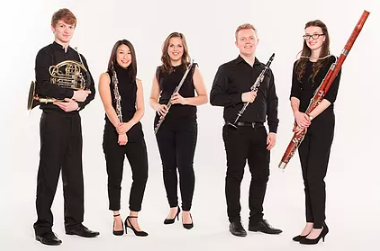After reviewing the piano music of Stephen Dodgson over the past few months, here we have some of his chamber music, the continuation of the Claudio series with Bernard Roberts, and of the Toccata series, of which I have only the excellent disc of the Quintets (TOCC 0357. Whatever, the future looks bright for lovers of Dodgson’s music, with these regular releases strengthening his profile in the catalogues.
 Piano Trio No. 1 (Methought this other Night) (1967)
Piano Trio No. 1 (Methought this other Night) (1967)
Divisions on an Air by Robert Jones
Piano Trio No. 2 in one Movement (1973)
Canonic Episodes
Piano Trio No. 3 (2000)
Bagatelles for Piano (1998)
Bernard Roberts Piano Trio
rec. 2002, Wathen Hall, St Paul’s School, Barnes, London
CLAUDIO RECORDS CC5257-2 [63:50]
The Piano Trio No. 2 was composed six years later and premiered by the Accordi Piano Trio who wanted a new work for their Wigmore Hall debut. The link between this and No. 1 is mainly in the use of variation form; the two trios are quite different in character, with the Second Trio being more strident, darker and more modern in approach, with a detailed use of chromaticism and shifting tonality. The first section acts as a kind of prelude, in which the thematic material, which will be used throughout, is announced; this is followed by a much slower section that contains some fine solo writing. The work then shifts and turns through tempo shifts and some more solo canonic writing before arriving at the cyclical Coda final section which returns to the music of the opening section, whilst giving more prominence to the “playful component” of the opening theme. This work is tonal throughout, although the boundaries are stretched at times, offering the listener much to enjoy.
Bernard Roberts had had a long relationship with the music of Stephen Dodgson, both as a solo pianist and chamber musician, and in his notes, Dodgson describes an “urge to write for the Roberts family trio”. The result was the Piano Trio No. 3 of 2000, some twenty-seven years after he had composed the Piano Trio in one movement, which here became his Trio No. 2. This is a more conventional work in its outlook, with its three movements pointing towards the classical model of the trio; however, there is nothing classical about this trio with its two slow movements bookending the faster central movement. This is my favourite work on the disc – I particularly like the way that the piano seems to be pitted against the strings in the first movement which is marked Broad & sonorous, and does not seem to reach its climax until the final bars. This is followed by a movement marked Violent, but with controlled speed; despite this there is nothing ‘violent’ about this music. Rather, this movement acts as the works scherzo and has some nice developmental sections; bold and brighter music is presented here, which rushes headlong to the movement’s conclusion. The final movement, Lingering but intense – a più mosso, is a beautifully languid and tranquil movement with the opening violin line underpinning the music as it is developed through four variations that gradually increase in pace without getting too fast: wonderful!
The following Six Bagatelles for Piano date from 1998 and were also specifically composed for Bernard Roberts, being premiered five days after the Piano Trio No. 3 in October 2000 and making a fitting addition to Roberts’s survey of the first six sonatas. The Bagatelles are diverse short pieces, which share the manner in which they all contain passages of repeated notes; however, although the Second seems to be drawn out of the First Bagatelle, these are quite individual pieces and could easily be listened to separately.
An excellent disc in which the three piano trios are the stars, the performance of these works by the Bernard Roberts Piano Trio is all that you could wish for, with a strong sense of ensemble playing throughout leading to wonderful performances. In the Bagatelles, Bernard Roberts continues where he left off in his recordings of the piano sonatas, with strong performances of these six short pieces.
 Chamber Music Volume Four – Music for Winds I
Chamber Music Volume Four – Music for Winds I
Sonata for Wind Quintet [10:03]
Gipsy Songs [16:49]
Wind in the Reeds [5:18]
Sonata for Horn & Piano [18:49]
Trio for Oboe, Bassoon & Piano [18:33]
Five Minutes for Wind Quintet [12:30]
Kate Howden (mezzo-soprano)
Magnard Ensemble
rec. 2017, Menuhin Hall, Yehudi Menuhin School, Stoke d’Abernon, UK
TOCCATA CLASSICS TOCC0453 [82:16]
The Toccata disc offers a selection of works containing various combinations of wind instruments, voice and piano, with the disc being bookended by two works for wind quintet. The first of these is the charming Sonata for Wind Quintet of 1977, which is an unusual name for a work employing these forces. Cast in three short movements the most striking thing is just how English the oboe sounds in the opening movement; there is also a prominent role for the horn, the composer’s own instrument, throughout the whole work. The work opens with a perky Vivace with its varying thematic material, before the slower second movement with its more sustained notes acts as a contrast between itself and the outer movements. The third movement is played without a break and is initially linked by some of the thematic material of the second movement, especially in the writing for the horn. This is a strongly tonal and beautiful work, one which reaches its conclusion all too quickly. Unlike the Sonata, which was commissioned by the Vienna Wind Quintet, the Five Minutes for Wind Quintet of 2008, were as Lewis Foreman puts it in his excellent booklet notes “written purely for the composer’s own enjoyment”. Opening with a wonderful evocation of a spring sunrise this is a work cast in five short movements; the second piece, ‘Scamper’, has bell-like interjections from the horn, whilst the other instruments scamper about, like the awakening of nature. The central movement is described by Foreman as having a gentle rocking motion like a hammock on a hot summer day in the garden. This is followed by the fourth movement entitled ‘Mischief’, a good-humoured and jolly piece. The final piece is called ‘Pigeon Chorus’ and provides a good depiction of the cooing call of the birds that gently fades away. Another wonderful work for wind quintet, which once again is all too short.
The four Gipsy Songs are not taken from gypsy melodies but from the text of Ben Jonson’s masque The Gypsies Metamorphosed. The setting is for mezzo-soprano, clarinet and piano, with the clarinet playing more than a supporting role for the voice, there being times when it drives the music along. I particularly like the fourth of the songs, ‘The Faery Beam upon You’, the way that the vocal line is originally supported by the lower register of the clarinet before the entry of the piano, with the interjections of the clarinet then becoming more telling and important, is quite lovely and a clever juxtaposition of the voice and clarinet.
The latest work on this disc is Wind in the Reeds of 2009, a trio for oboe, clarinet and bassoon, which here receives its first performance. Its three very short movements explore the sonorities of the individual instruments, both as soloists and in partnerships with each other, very well indeed, especially in the concluding movement, ‘Bright and playful’, with its dance sections summing up the work well, a lovely celebration of the sound of the woodwinds.
The Horn Sonata of 1967 received its premiere on a Radio 3 broadcast three years later. This is a celebration of the composer’s own instrument and at just under nineteen minutes is the longest work on this disc. It opens quietly and slowly before the music increases in tempo and intensity, with the first theme concluding with three repeated notes, something that Dodgson is known for and a motif which recurs in this movement. The slow movement begins quietly on the piano before the entry of the horn, hesitantly at first, but then with more authority with, again, a repeated note driving the music forward. The final movement is the longest of the three, a typical feature of Dodgson’s music; it consists of a single main theme which then returns in the form of four extended variations, where the theme is treated to changes in modulation and tempo. This is a fine work, one which despite my having a lot of music for the horn I have here experienced for the first time, which is a shame as this is a significant celebration of the instrument.
The only work yet to be discussed is the Trio for Oboe, Bassoon and Piano which was composed in 1973 and which like the Horn Sonata, is in three movements, the first two being quite short with the final movement containing a substantial set of variations. The opening Prelude is almost Poulenc-like, in the way that the two woodwind instruments are almost in conversation with each other with the piano playing a supportive role until the end of the movement. Dodgson described the second movement, ‘fly-by-Night’, as a “nocturnal scherzo” in which the instruments seem to have separate thematic material, with the skittish oboe representing ‘flight’, whilst the brooding bassoon represents ‘night’, the piano fliting between the two. The final opens with the bassoon announcing a substantial solo theme and what follows is a set of six variations based upon this theme, with the first being mainly on the oboe and the piano with the bassoon playing only a supporting role. The variations then grow in intensity, with the piano gaining a more prominent position, with the shifting use in the thematic material being quite telling and ingenious, with the final variation being ‘fandango-like’ keeping closely to the original melody. This is a wonderful work, one in which the final movement is longer than the two preceding movements combined, and one which is a celebration of Dodgson’s musical vocabulary.
This is a splendid disc, one which is expertly performed throughout by the Magnard Ensemble, I was particularly impressed by their horn player Jonathan Farey, who rises to all the challenges posed by the wonderful Horn Sonata as well as the two works for wind quintet, but all the members of this group are on top form, I hope they are involved in subsequent volumes of the wind chamber music. The recorded sound is excellent as are the booklet notes, which are exemplary, making this an invaluable addition to any collection of Stephen Dodgson’s music, and English wind music as a whole.
 With both these discs being very desirable, if you were to invest in a single disc it would very much depend on personal preference when it comes to instrumentation, the strings or the winds, if it was me I would be loathe to lose either, but if I had to chose just one I would go for the Toccata disc, the beauty of the music is a real winner.
With both these discs being very desirable, if you were to invest in a single disc it would very much depend on personal preference when it comes to instrumentation, the strings or the winds, if it was me I would be loathe to lose either, but if I had to chose just one I would go for the Toccata disc, the beauty of the music is a real winner.
MusicWeb International
Stuart Sillitoe






